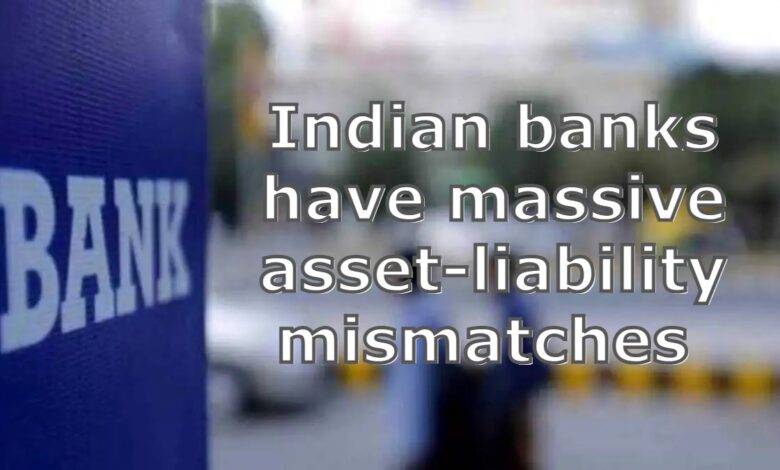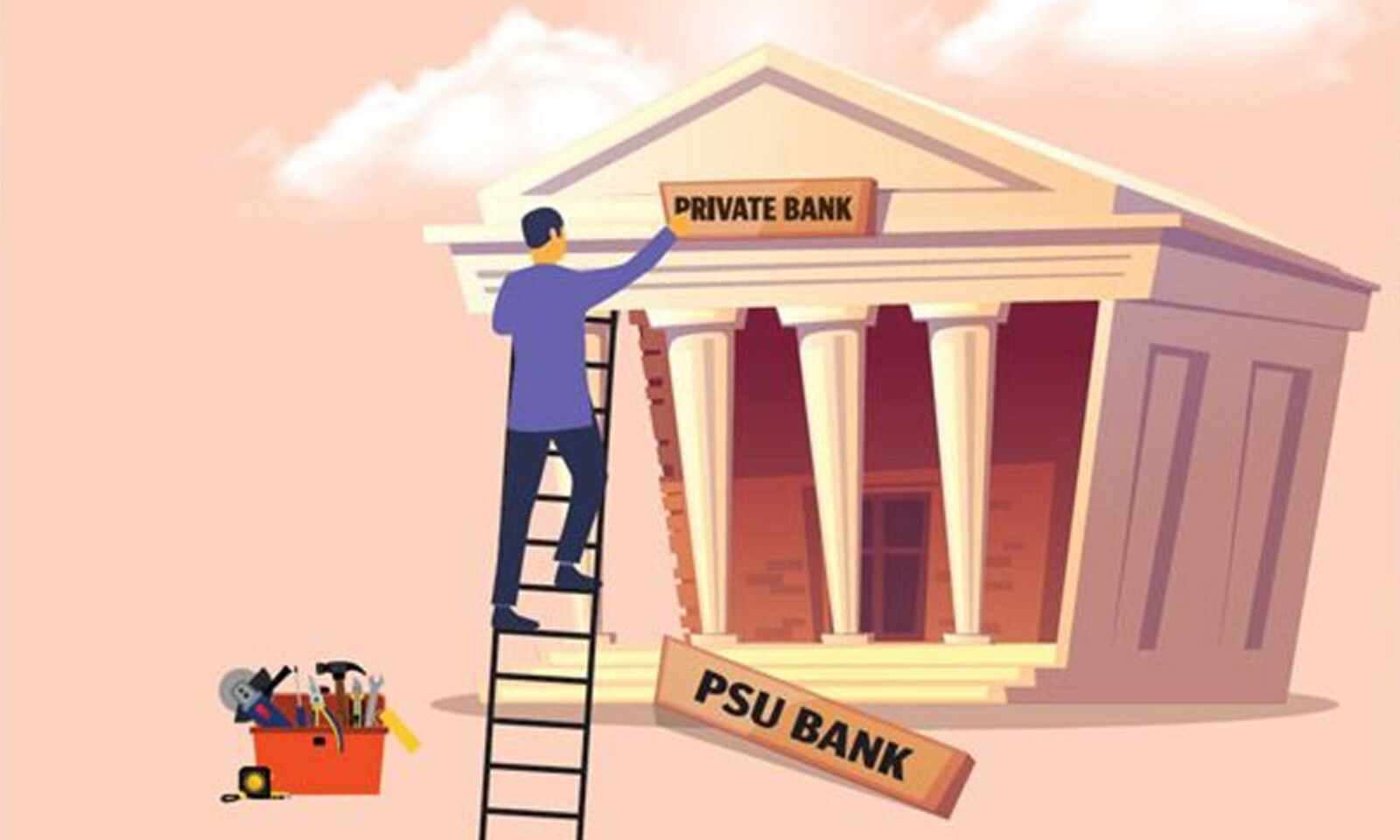Indian banks have massive asset-liability mismatches

Indian banks have massive asset-liability mismatches
Pronab Sen’s comments at Bandhan Bank‘s anniversary celebration: Privatization of banks could lead to heightened risks
An asset-liability mismatch in the Indian banking system is waiting to explode at any point, said Dr. Pronab Sen, former Principal Economic Advisor to the Planning Commission.
The government is picking up the risk as most of the banks are in the public sector, which is why they have not exploded. Risks could increase a result of privatization.
“Bank assets are becoming extremely long-term in nature. There are now around two and a half years between the time a bank lends and at the same time the time it is exposed. There can be a big asset-liability mismatch. Sen said on Tuesday while delivering the anniversary lecture on Bandhan Bank’s Foundation Day that it hasn’t happened so far since a large chunk of our banks is public-sector banks.
As a means of mitigating risk, India should adopt the universal banking model of European and Japanese countries.

Focus more on MSMEs
Sen believes that banks should lend to the MSME sector to create employment and grow the economy.
As MSMEs don’t fit the bank’s risk profile, they are not approved for long-term loans. According to him, Indian banks are inefficient when it comes to lending.
As a result of the lack of competition from non-corporate entities, including SMEs, he emphasized the importance of rebuilding the MSME sector. Corporations have been able to pass on costs to consumers more easily. Unless MSMEs return to the market, the situation will not improve.
It is already occurring that we will experience much slower growth if we rely on the corporate sector to drive our development forward,” he said.
The NBFC sector filled in the gap for a long time by lending to it, but NBFCs in today’s market are undergoing a similar struggle. NBFCs should therefore be partnered with banks to lend to them.
An asset-liability mismatch is endemic to the Indian banking sector, noted economist Pronab Sen said, adding that reassessing rules governing the sector is necessary.
Due to the public nature of most banks, “that explosion” has not occurred.
He explained that Indian banks adopted the British model and are not allowed to borrow from the capital market, so deposits are the only means of funding the banks.

“Bank lending has a tenure of about nine years, and deposits have a tenure of around two-and-a-half years. The asset-liability mismatch is huge, with nine years on the asset side and 2.5 years on the liability side… which means the mismatch can explode anytime.” As he lectured on Monday night at the 7th-anniversary celebrations of Bandhan Bank, the former chairman of the statistical commission explained.
He said that the bulk of banks is public, so the banks haven’t applied until now… Now, the banks have to assess not only borrower risk, but also the length of time they lend… It’s a very risky business,” he said.
It is estimated that banks lent about 70% of their loans for working capital about 20 years ago, 20% for retail, and 10% for term loans.
The current loan portfolio consists of 45% fixed capital and 35% working capital, he said.
There must be a relook at the laws since the Indian banking sector became universal by default and not by design, according to a former principal economic advisor to the Planning Commission.
We should align our laws with those of Japan and Europe to allow lenders to raise money on the capital market.
He says COVID-19 has “broken and damaged” MSMEs, which need to be rebuilt after the pandemic.
Banks are unwilling to lend to many MSMEs due to their risk profile, according to the noted economist.
This is where the relationship between the NBFCs and banks enters the picture, and it is not healthy. NBFCs used to fill this gap in the past, but today they are as at risk as MSMEs.
According to Sen, NBFCs and banks need to reconsider their relationship. They should be viewed as partners, not as clients or borrowers.

As a warning against privatizing state-run banks, Sen warned of heightened risks.
As a result of privatization, the entire loan and deposit portfolio of lenders would go to a private entity without any extra support from the government.
RBI Warns Against ‘Big-Bang’ Privatization Of State-Owned Banks
The Reserve Bank of India says a big-bang approach to privatizing India’s state-run banks may do more harm than good.
According to the central bank, state-run banks succeeded in promoting financial inclusion more than their private counterparts when the sole motive is not only profit maximization but also countercyclical monetary policy.
A bulletin published by the central bank today states that “public sector banks are not only motivated by profit maximization” and incorporate financial goals.
As a result of recent mergers of PSBs, this sector has developed into a more robust, competitive bank, despite criticism of weak balance sheets.
New Delhi is believed to be planning to introduce legislation in the parliament that would facilitate the privatization of state-run banks, thus giving rise to the RBI’s “alternative views.” In addition, the finance ministry is negotiating ownership and controlling stakes with the RBI, the banking regulator. A maximum of 26% of private banks can be owned by supporters.
Finance Minister Nirmala Sitharaman presented the budget for FY22 on February 1, 2021, saying the government would privatize two public sector banks
One general insurer is in the process of privatization.

Niti Aayog had recommended to the disinvestment department, Central Bank, in April 2021 that banks should be privatized
The names of the shortlisted candidates have not been released. Those with knowledge of the matter say that little progress has been made since then.
It has already been announced that two banks will be privatized by the government. A gradual approach to privatization would ensure that financial inclusion and financial information aren’t undermined by large-scale privatization, which RBI started today.
Bhartiya Mahila Bank and five associate banks were merged with the country’s largest lender in 2017. Governments reduced 10 nationalized banks into four large lenders in 2020, reducing the number of nationalized banks to 12 from 27 in 2017.
It is expected that the building of National Asset Reconstruction Company Limited (NARCL) will assist in easing their legacy debt burden of bad loans, while NABFiD, which was recently constituted, will provide PSBs with another channel for infrastructure funding, thus reducing their concerns about asset-liability mismatches.
A More Nuanced Approach Is Needed While Pursuing Privatization, According To The Central Bank, From The Conventional Perspective That Privatization Is A Panacea For All Ills.
edited and proofread by nikita sharma




